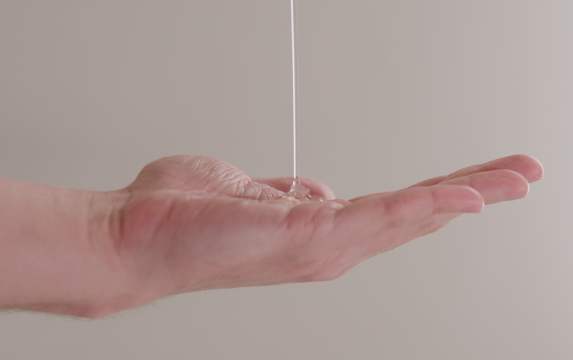Using stem cells for restoring erectile mechanisms is an experimental treatment with promising results, but further studies are warranted to support its safety and efficacy.
The term ‘Erectile Dysfunction’ (ED) relates to the continuous inability to achieve or maintain an erection hard enough for satisfactory intercourse. PDE5 inhibitors drugs, such as Viagra, Sialis and Levitra, are the most widely prescribed medications for treating ED due to their overall efficacy in treating mild-moderate ED. However, in certain circumstances, drug treatment may not be well tolerated, or it may have contra-indications, rendering it unsuitable for use. For patients with severe ED, drug treatment might not be effective, and more invasive treatment will be required, such as the implantation of a penile prosthesis, which involves the risks of surgery-related complications and side effects.
In addition, most therapies merely treat the symptoms rather than offer a real cure for the underlying disease, and for most patients and their partners, spontaneous erections are highly important, though they’re unachievable with drug treatment. For these reasons, in recent years, novel regenerative approaches have been sought that restore the structure and function of the penile erectile tissues and actively reverse erectile dysfunction.
What are Regenerative Therapies for Erectile Dysfunction?
The meaning of the word regeneration relates to something being re-grown or renewed (restored). Regenerative medicine is a promising field of research. It is based on the concept of repairing or restoring damaged tissues by stimulating the body’s natural regeneration mechanisms. With regard to ED, treatments focus on restoring the natural erectile mechanisms, including the regeneration of damaged muscle and nerve tissues. Likewise, recently, a novel technology based on radio frequency has been developed in Israel, aimed at restoring the collagen fibers in the tunica albuginea tissue in the penis. This tissue has a central role in the physiological erectile mechanism and is associated with the ability to achieve spontaneous erections.
Regenerative medicine is considered today a promising therapeutic approach for ED. It includes various types of treatments, including platelets-rich plasma (PRP), the use of regenerative technologies such as shockwave therapy or Radio Frequency (RF) therapy, as well as stem cell therapy on which this article will focus.
What are Stem Cells?
Stem cells are unique cells that have not yet differentiated into a specific cell type. This is in contrast to most of the cells in the body that have undergone a differentiation process and therefore perform specific roles in a particular tissue or organ. For example, the specific role of a red blood cell is to carry oxygen via the blood.
Stem cells are present both during embryonic development and in the adult body.
All humans develop from a single cell (the zygote, which is a fertilized egg cell). The zygote then undergoes a series of divisions: a single cell divides into two, then four, and so forth, until a cluster of dividing cells is formed, namely, a blastocyst. The blastocyst contains inter-alia, pluripotent stem cells that can develop into any type of cell in any tissue (a muscle cell, a liver cell, a neuron, etc.’). Thereafter, during the process of embryonic development, the pluripotent stem cells undergo division and differentiation into multipotent stem cells – which have the ability to differentiate into all cell types within one particular lineage. For example, a multipotent hematopoietic stem cell can only differentiate into a blood cell lineage (and cannot, for example, become a liver or a muscle cell), though it can then differentiate into any of the various types of blood cells.
Thus, while embryonic stem cells are pluripotent and can develop into any type of cell, adult stem cells are multipotent and can only differentiate into a specific cell lineage. This is the main reason why the research is more focused on embryonic stem cells for the regeneration and restoration of injured organs, though multipotent stem cells are also being studied in this context.
Studies have found that stem cells have the ability to regenerate by releasing biological substances that stimulate cell division and differentiation, such as growth factors, cytokines, and chemokines; by regulating pathways that reduce inflammatory processes, inhibiting cell death mechanisms, accelerating wound healing processes, promoting the formation of new blood vessels, and more.
Stem Cells Potential in Treating Erectile Dysfunction
Let’s shortly review the erectile mechanism:
The erectile bodies (Corpora cavernosa) in the penis comprise a network of hundreds of thousands of blood vessels lined by a single layer of endothelial cells and multiple layers of smooth muscle cells. Erection is achieved when sexual stimulation from touch or thought passes like a signal from the brain via neural centers along the spine into the penis and causes the release of a molecule called nitric oxide (NO) from penile terminal fibers. NO then enters the smooth muscle cells in the cavernosal blood vessels and induces their relaxation via a biochemical process. As a result, these blood vessels expand, allowing blood to rush in and engorge the erectile bodies, the penis gets rigid, and erection is achieved. After that, endothelial cells also release NO to maintain the erection throughout the sexual act.
Therefore mechanically, the key cells of erection are the endothelial cells, the smooth muscle cells, and NO-releasing nerve cells. However, in various disease states (such as diabetes, hypertension, cardiovascular disease, etc.) and also as a result of surgery (such as for the removal of the prostate gland) and radiotherapy, these cells can be irreparably damaged leading to erectile dysfunction.
Since stem cells have the potential to differentiate into various cell types, including endothelial cells, smooth muscle cells, and nerve cells, it has been postulated that they could replace damage to the tissue of penile structures as novel ED therapy.
Over the years, different sources of stem cells have been studied. Mesenchymal stem cells, which are a pluripotent adult stem cell population capable of differentiation into multiple cell lines, represent the most widely studied cellular group for the treatment of ED.
What does the Research Say?
While pre-clinical studies have yielded promising results and led to important discoveries about the mechanisms of erectile tissue regeneration, clinical research in humans is still quite limited. So far, about 9 small clinical studies have been completed. In two of the earlier studies, embryonic stem cells were used. In the first study, 7 men with diabetes-related ED, who did not respond to conventional drug treatment, were injected umbilical cord stem cells into their erectile bodies. After 3 months, 6 out of 7 patients regained their spontaneous morning erections, and these results were maintained for 6 months of follow-up. When the patients started taking ED medications before sexual activity, 2 out of 7 achieved an erection hard enough for satisfactory intercourse. In the second study, 8 patients with ED were treated with placenta-derived stem cells injected into the penile erectile bodies. Of the eight, 3 patients regained spontaneous erections throughout the follow-up period.
A later study (2018) looked at 21 men suffering from ED following a radical prostatectomy (prostate gland removal surgery) who did not respond to conventional ED drug treatment. Adipose tissue-derived stem cells were injected into their penile erectile bodies, and the participants were followed for one year for safety and improvement of erectile function. Of the 15 continent men, 8 reported satisfactory erectile function. However, the men who remained incontinent following radical prostatectomy did not regain erectile function.
In another study (2019), 30 men with ED from various causes (diabetes, post-prostate gland removal, vascular disease, and more) were treated with adipose tissue-derived stem cells. After 3 months, IIEF-5 (the international index of erectile dysfunction) scores demonstrated an improvement of at least 2–4 points from baseline, beginning at 3 months following the procedure and sustained at 9 months.
What is Important to Remember?
So far, the safety and efficacy of stem cell therapy have been established only in part of the studies in animal and human models. Human clinical studies are very small, and there is significant heterogeneity among the studies (regarding the design, participants, stem cell source and quantity, and treatment regimen). This diversity of elements makes it difficult to draw conclusive conclusions. Therefore, larger placebo-controlled, double-blinded, and randomized trials are needed to understand the full potential of stem cell therapy in ED, as well as which stem cell sources are the most efficacious.
As of June 2022, some medical centers began experimental ED treatments based on stem cell injection into the penile erectile bodies.
The Company hereby clarifies that the information contained on the website is for informational purposes only, and is not intended to be a substitute for professional medical and healthcare advice, and does not constitute medical advice or opinion. Always seek the advice of your physician or other qualified health provider with any medical condition or question you may have regarding a medical condition.





